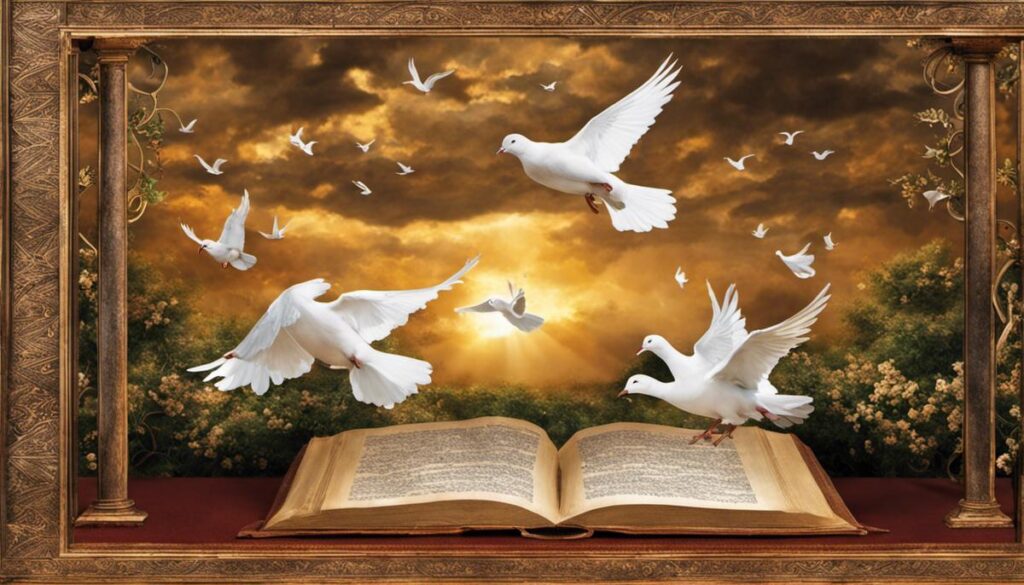Dreams, for centuries, have been regarded as a medium teeming with potent symbolism. Among the myriad of symbols that frequent our nocturnal mindscape, one as enduring as it is delicate, is the dove. Tracing its representation back to ancient scriptures, the dove has been imbued with profound implications, deeply woven into the fabric of religious narratives, theological interpretations, and psychological paradigms. This discourse unfolds to shed light upon the often overlooked layers of meaning that the appearance of a dove in dreams might hold, navigating through historical contexts, theological perspectives, psychological interpretations, and cultural variations, revealing how encompassing and intriguing a simple symbol can be.
Historical Context of Doves in Ancient Scriptures
Divine Symbolism: The Doves in Ancient Religious and Historic Writs
Since the dawn of civilization, humans have observed and interpreted the world around them in profound ways. Certain elements of the natural world have held mystic significance in our psyche, one of which is the dove. In various ancient religious and historical scripts, the dove is portrayed as a symbol of divinity, love, peace, and prophetic vision, among others.
Delineating the symbolism embedded in ancient periods must involve a holistic approach of observing these societies and accounting for geographical, cultural, and temporal variations. Meandering through the maze of time and cultures, we can trace the first depiction of doves in Mesopotamian cuneiform texts. Here, Ishtar, the goddess of love, prospers under the emblem of a dove. The association of doves with love and fertility emerges from this early period and persists across time and cultures.
Further east, in the ancient scripts of China, the dove manifests as a symbol of long life and fidelity. This is primarily due to the dove’s longevity and its propensity to form monogamous bonds. The frequent, assertive cooing of doves also positioned them as messengers or intermediaries in several cultures.
In biblical texts, the dove also holds a prominent position. One of the most well-known instances is the story of Noah’s Ark, where a dove returns with an olive branch, signaling the end of God’s wrath and the restoration of peace. The dove thus came to symbolize peace and the divine promise of salvation. Similarly, in the New Testament, the Holy Spirit descends as a dove at Christ’s baptism, reinforcing its sacred connections.
Pigeon post, another historical marker, leverages the homing instinct of these birds. Doves were used for communication and carrying messages across distances in both peace and wartime scenarios, further solidifying their messenger status.
Finally, in Greco-Roman mythology, Aphrodite and Venus, goddesses of love, bore doves as their sacred symbols. These classic myths demonstrate commonalities between Eastern and Western cultures, reinforcing the dove’s emblematic position in expressing love and peace.
In conclusion, the ubiquity of dove symbolism across various ancient scripts testifies to its revered status in human consciousness. From being harbingers of love in Mesopotamian culture, symbols of fidelity in China, messengers of peace in Biblical and wartime narratives, to divine indicators in classic mythology, doves have been stitched into the very fabric of human culture. As we comb through these ancient texts, learning about doves and their representation, a tapestry of human understanding and symbolisms unfurls, reflecting the profound interaction between humans and nature throughout the ages.
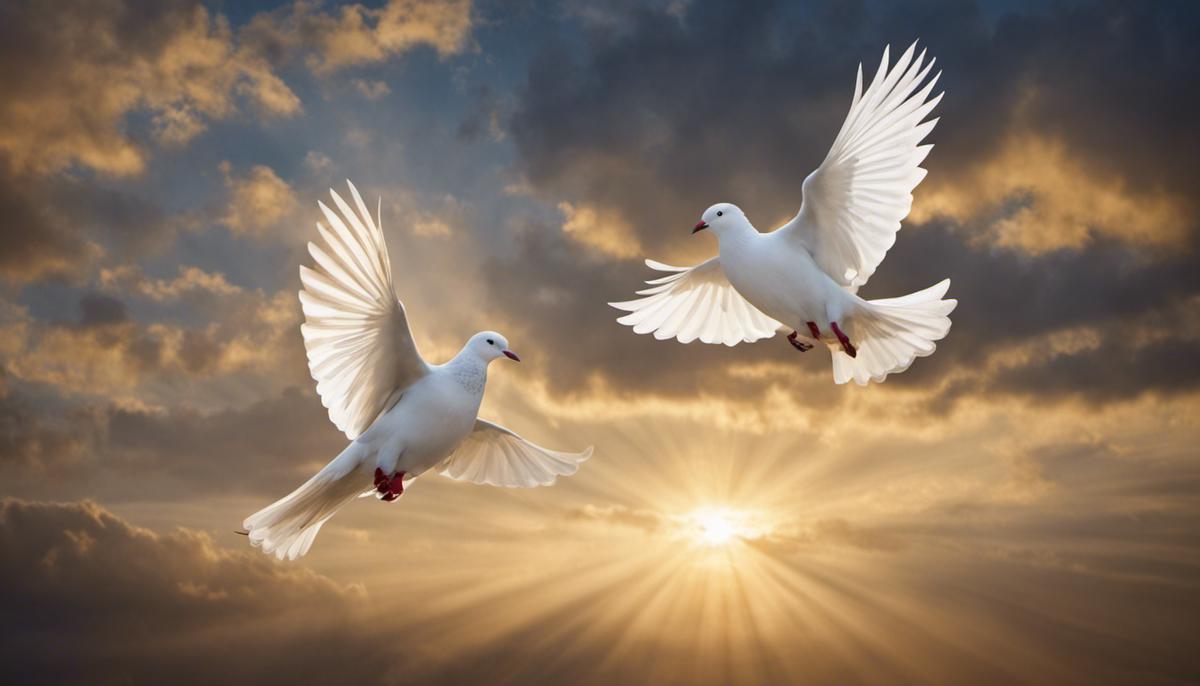
Theological Interpretation of the Dove in Dreams
Diving deeper into the contextual interpretation of dreams featuring doves, various theological perspectives often offer profound interpretations that build upon traditional symbolism associated with this bird. The analysis of doves in dreams isn’t restricted to their universal icons of love, peace, and prophetic vision. The dove’s appearance in our subconscious slumber may have nuanced understandings based on different theological perspectives, asking us to look beyond the secular and embrace the ethereal.
In the realm of Christian theology, a dream involving a dove may be seen as a nod towards spiritual reflection and awakening. Christians often interpret such visions as messages from the Holy Spirit, primarily given the Spirit’s depiction as a dove in biblical texts like the account of Jesus’ baptism (Matthew 3:16). A dream with a dove might be considered a call towards faith or a spiritual journey, often tied to one’s inner relationship with God and Humanity. Therefore, it serves as a divinely inspired reminder of the values of love, peace, and communication, as depicted in age-old pigeon post traditions, combined with resilience drawn from Noah’s Ark’s narrative.
In Jewish mysticism and Kabbalah, the interpretation of dreaming about a dove might take a layered approach. The Zohar, a significant work in Kabbalah, often references a dove as the symbol of the Jewish Nation’s soul. Thus, a dove appearing in dreams may be interpreted as a spiritual covenant, drawing strongly upon historical elements in Jewish culture, imbued with the promise and hope offered by the story of Noah’s Ark.
Islamic theology, on the other hand, assigns a different weightage to dreams involving doves. For them, a dove represents purity, tranquility, and the quietude of the soul. As we trace the Quran’s references, we come across Surah Nooh (71:1-28) where Noah used a dove during the great flood, hence the dove acquire a unique significance in their lore, and dreaming about it invites the dreamer to embark on a spiritual journey filled with tranquility and purity.
Hindu theology, on the other hand, views a dove in dreams with a slightly varying lens. Through works like the Mahabharata’s depictions of doves, it becomes evident that doves are representative of serenity, emotional calm, and offer a connection to the celestial. Thus, dreaming of a dove becomes a divine message to maintain emotional balance and to cultivate calmness and peace in an often chaotic world.
The interpretations derived from these theological perspectives are not exhaustive but offer a starting blueprint for understanding. It’s essential to remember that these theological interpretations, like dreams, are highly subjective. Personal and cultural backgrounds play immense roles in shaping our understanding of such profound symbolisms. With universally accepted symbolism to their credit, the doves seem to gently remind humanity of the essence of peace, communication, love, and resilience that transcend cultural barriers and stand the test of time.
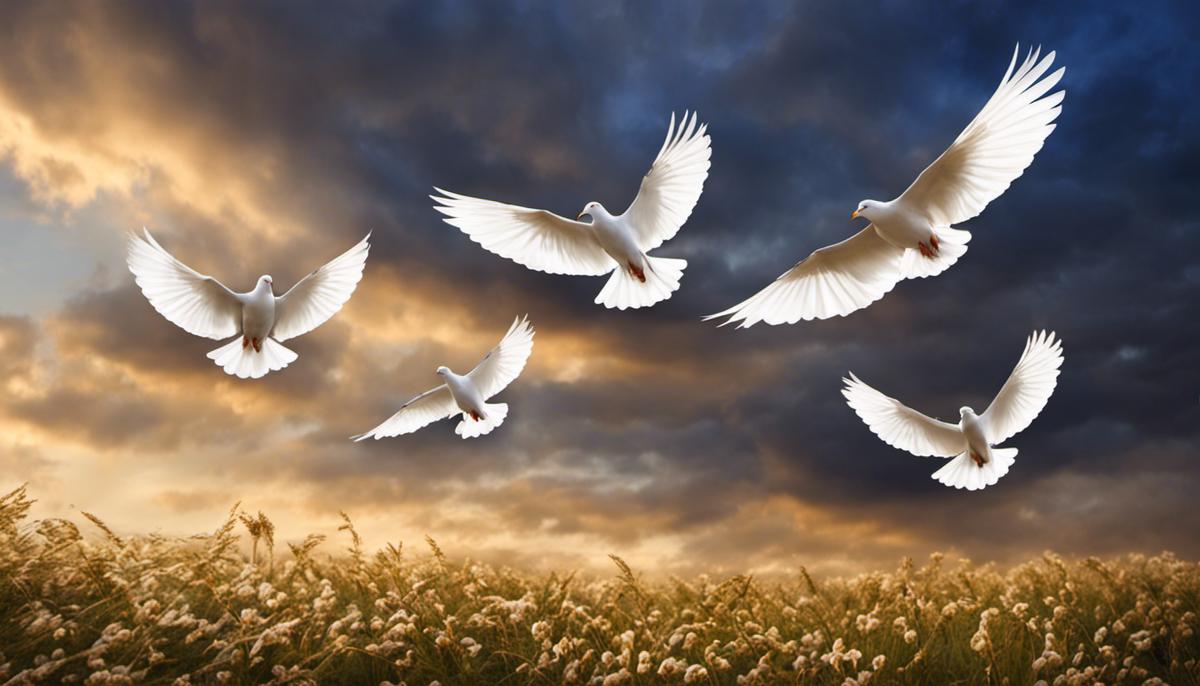
Psychological Analysis of Dove Representations in Dreams
Within psychological analyses, scholars approach dream interpretation through a variety of theoretical lenses, each of which positions the representation of doves within unique frameworks. Notably, the discipline of psychoanalysis, founded by Sigmund Freud, provides a robust platform for comprehending this pervasive symbol. Psychoanalysis posits that dreams serve as windows into our unconscious desires, fears, and conflicts. As such, a dove present in one’s dream might be interpreted as an unconscious yearning for peace, love or spiritual fulfillment, aligning with traditional worldwide ideations of the dove.
Carl Jung advanced Freud’s psychoanalytical theory with his concept of ‘collective unconscious’ – encompassing universal symbols or ‘archetypes’ shared among all humans. Thus, in Jungian perspective, a dove, much like water or mother figures, might signify universally shared symbols of peace, harmony, divinity and purity. Jung’s theory would suggest that doves in dreams connect the dreamer to their inherent psychic history and shared human experience.
A more contemporaneous school of thought within psychology, cognitive psychology, views dreams less as repositories of hidden meanings and more as a confluence of memories and experiences. The appearance of a dove in a dream could be influenced by cultural and personal contexts – a recollection of a recent wedding attended (wherein doves were released), a memory dredged up from a religious education, or a reflection of personal emotions towards peace culture – rather than embodying intrinsic symbolic meaning.
Behavioral psychologists, on the other hand, argue that dreams are by-products of brain activity with no inherent meaning. A dove is represented in dreams merely due to the individual’s exposure to one in their daily life or through media. It could be a learned response or association conditioned over repeated exposure to dove symbolism.
The Humanistic approach, popularized by Abraham Maslow and Carl Rogers, might interpret the dove as a symbol of self-actualization or peace within oneself. These psychologists were interested in personal growth and fulfillment, and would regard a dove in dreams as an indication of one’s journey towards self-enhancement or personal transformation.
In contemporary psychology, the multidimensional approach to dream interpretation integrates various psychological perspectives. The function of a dream involving a dove could be to regulate sleep (physiological), solve problems (cognitive), reflect learned associations (behavioral), reveal repressed wishes (psychoanalytic), signify self-actualization (humanistic), or tap into universal symbols (Jungian).
In conclusion, the representation of a dove in dreams holds multifaceted interpretations within psychological paradigms. A thorough understanding of our dreams, including the appearance of a dove, necessitates a comprehensive approach integrating these diverse perspectives. Each of these theories provides a piece of the puzzling human experience of dreaming, helping to shed light on the peculiar symbolism of a dove in dreams.
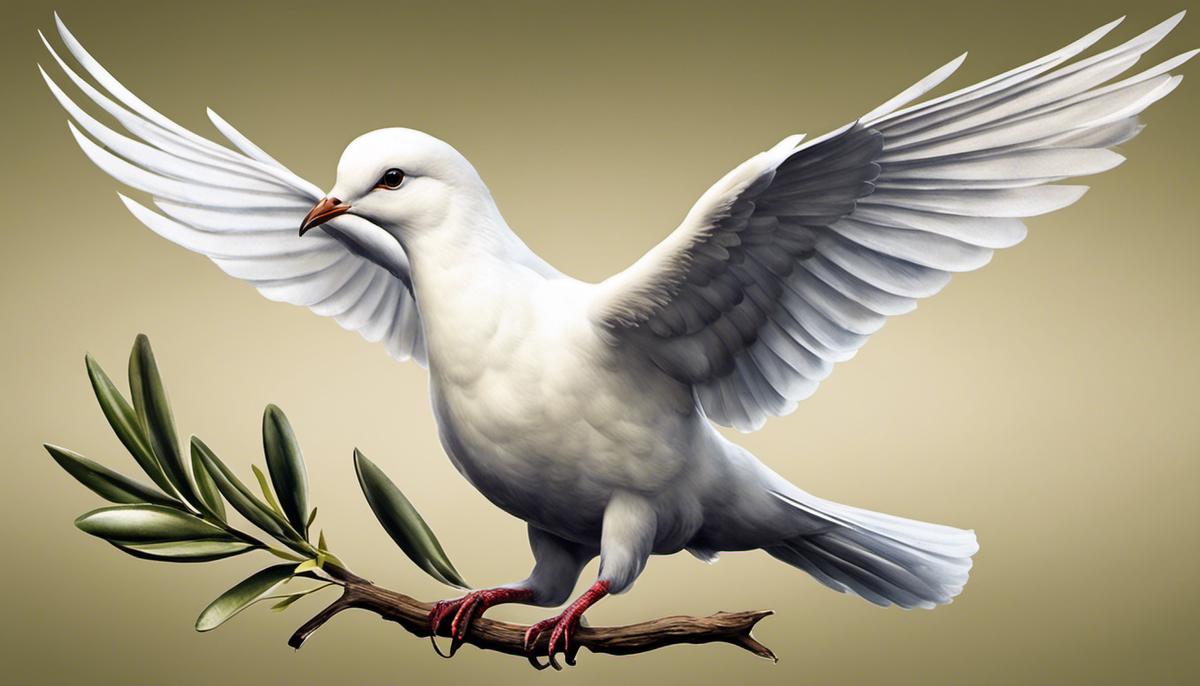
Cultural Variations in Perceptions of Doves in Dreams
Expounding upon the various interpretations of dream symbolism across cultures, this article will focus on the expanding dimensions of dream interpretation from the lens of psychoanalysis, cognitive psychology, humanistic psychology, behavioral psychology, and the contemporary multidimensional perspective.
Firstly, psychoanalysis proposes a compelling framework for dream interpretation. By incorporating the symbolism of doves in dreams, psychoanalytic theory, most widely associated with Sigmund Freud, postulates that the dove’s appearance often uncovers repressed or latent feelings. Doves, therefore, can symbolize a profound desire for affection, connection, peace, or reconciliation, often emanating from our hidden unconscious mind.
Notably, Carl Jung diverges from traditional Freudian psychoanalysis. He introduces the concept of the collective unconscious, suggesting that symbols, such as doves in dreams, are ubiquitous across cultures, carrying similar core meanings. These symbols, or archetypes, permeate humanity’s shared mythical narratives. Thus, a dove appearing in dreams might signify universal archetypal themes of peace, innate wisdom, and spiritual transformation.
Cognitive psychology offers an alternative perspective, postulating dreams as a confluence of memories and experiences rather than symbolic expressions of unconscious drives. In this context, a dove’s representation in dreams might reflect previous encounters or associations with the bird, perhaps even mirroring a recent interaction, conversation, or observation within an individual’s waking life.
Behavioral psychology takes a divergent stance, arguing dreams, by nature, lack inherent meaning. Doves materializing in dreams, therefore, don’t hold specific symbolic significance. Instead, behavioral psychologists purport that the correlations we make concerning doves and their symbolic meanings result from learned associations.
Meaning is intensely subjective in the lens of humanistic psychology. Here, the dove serves as a personal symbol embodying aspirations of self-actualization or inner peace. Such an interpretation rests on a non-pathologizing perspective where dreams communicate individualized messages to unify the dreamer with their authentic self.
Lastly, contemporary psychology’s multidimensional approach assimilates various perspectives. It suggests that interpretations of doves in dreams necessitate an integrative stance encompassing cultural, universal, and personal facets interfacing with different psychology branches. Dreams of doves, therefore, can denote various meanings becoming unique to an individual’s circumstances, associations, and cultural beliefs.
In conclusion, understanding the nuances of dream symbolism, such as the appearance of doves, calls for multiple interpretive lenses. These encompass psychoanalytic, cognitive, humanistic, and behavioral dimensions, further embellished by the comprehensive panoramic view afforded by the multidimensional approach. All of which contribute to deepening our insight into the realm of dreams and the enigmatic symbolism inherent within it.
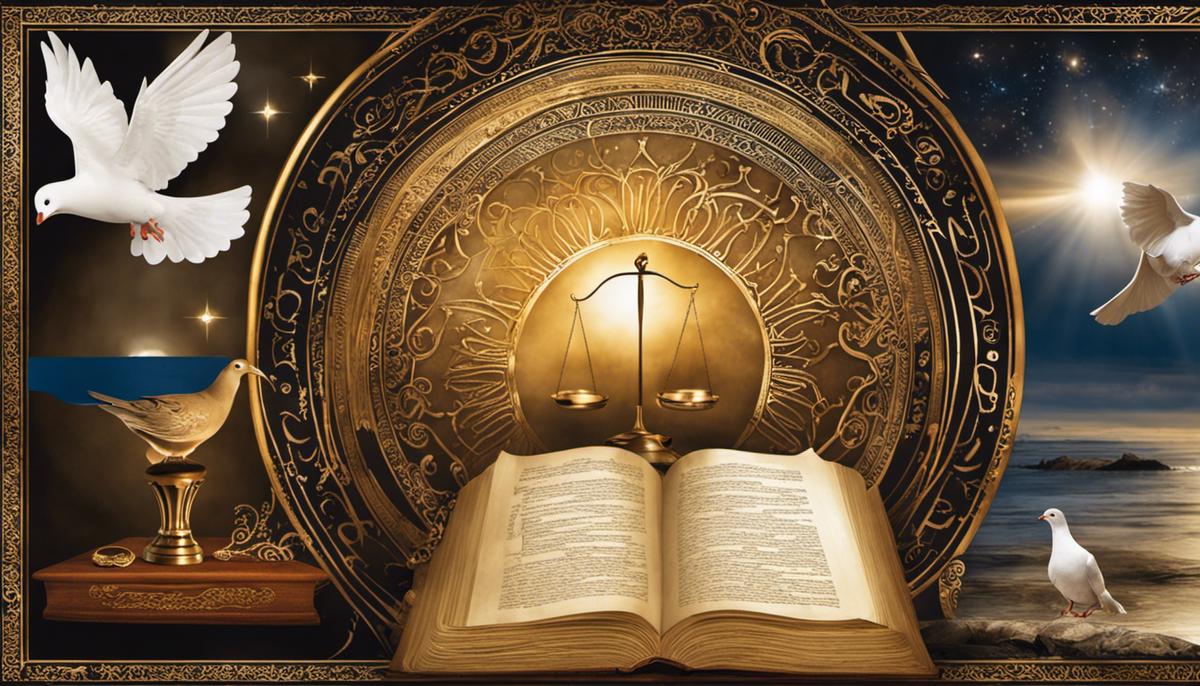
After examining the dove symbol from various perspectives, it becomes clear that a dove in a dream is not merely a fleeting vision, but a reflection of deeply rooted spiritual, psychological, and cultural constructs. Whether bearing divine messages of peace and purity, a psychological manifestation of inner tranquility or unconscious aspirations, or a cultural representation infused with traditional beliefs, the dove stands as a versatile and powerful symbol. This exploration of the dove symbol illuminates our understanding, reminding us that dreams, in their silent and subtle language, carry messages worth deciphering.

